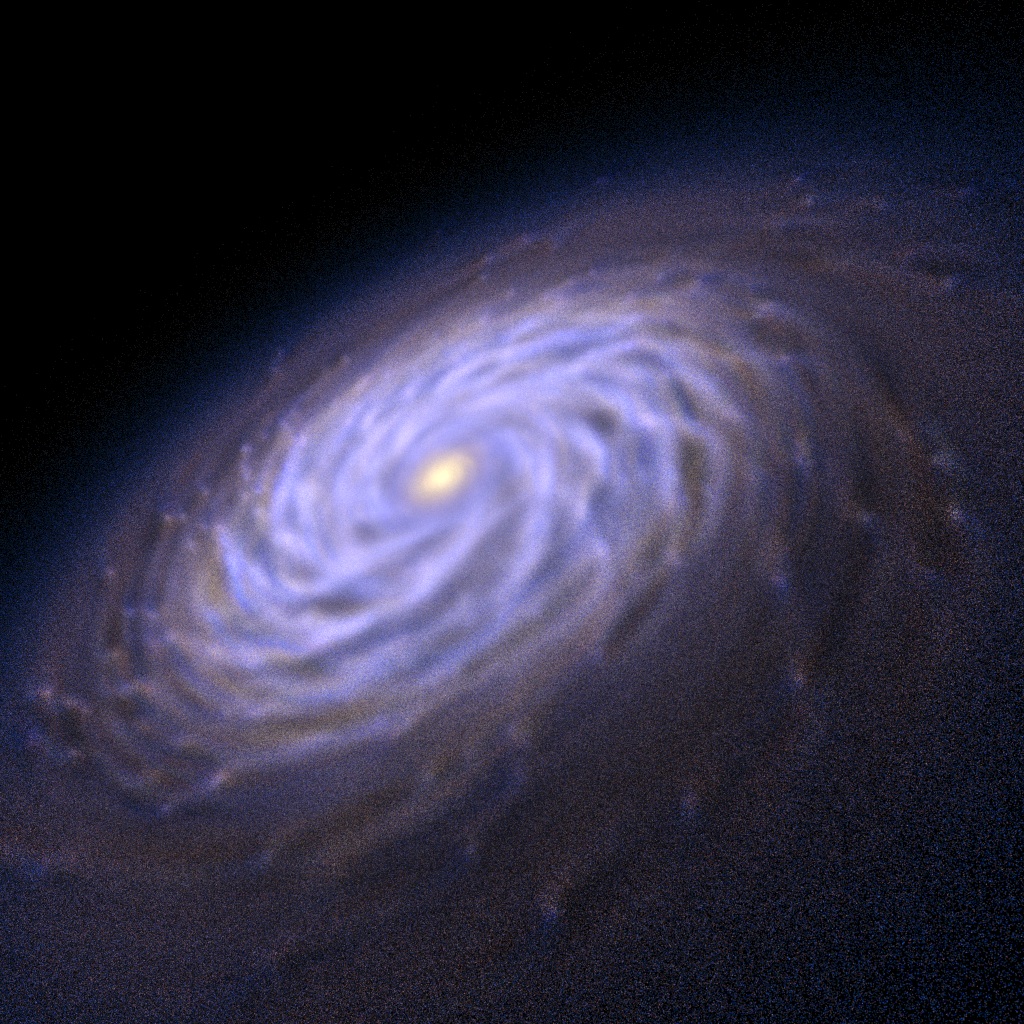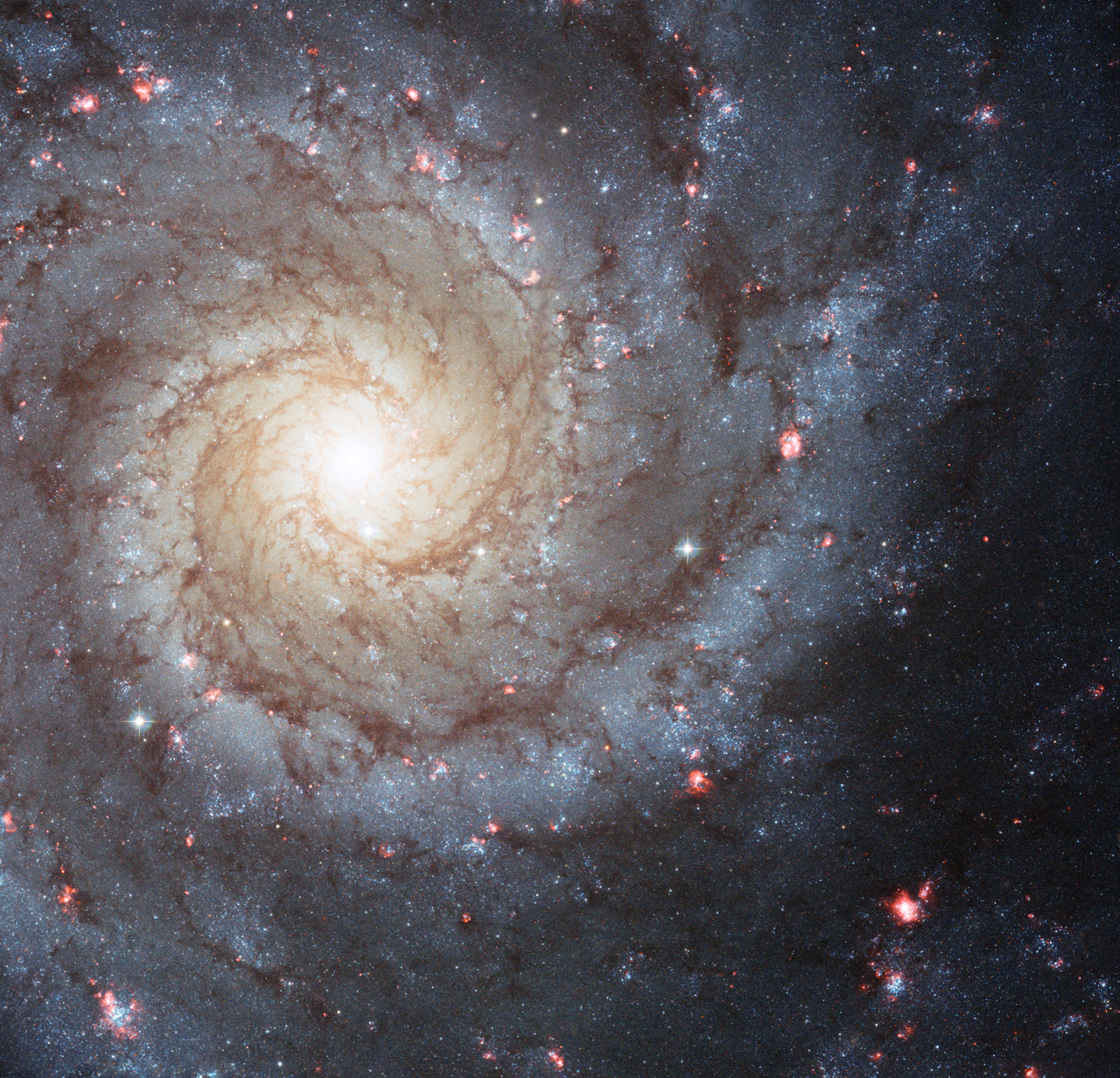Image List
-

Powerful new computer simulations are allowing astronomers to understand how spiral arms in galaxies form and survive. These simulations suggest that the arms arise as a result of the influence of giant molecular clouds - star forming regions or nurseries common in galaxies. Introduced into the simulation, the clouds act as "perturbers" and are enough to not only initiate the formation of spiral arms but to sustain them indefinitely. In this frame from one such simulation, more than 100 million "stellar particles" form the familiar shape of a spiral galaxy. The full animation has been posted online.
Thiago Ize & Chris Johnson (Scientific Computing and Imaging Institute) -

This Hubble Space Telescope photo of Messier 74 reminds us that spiral galaxies are some of the most beautiful and photogenic residents of the universe. Nearly 70 percent of the galaxies closest to the Milky Way are spirals. New research finds that spiral arms are self-perpetuating, persistent, and surprisingly long lived.
NASA/ESA/Hubble Heritage Team